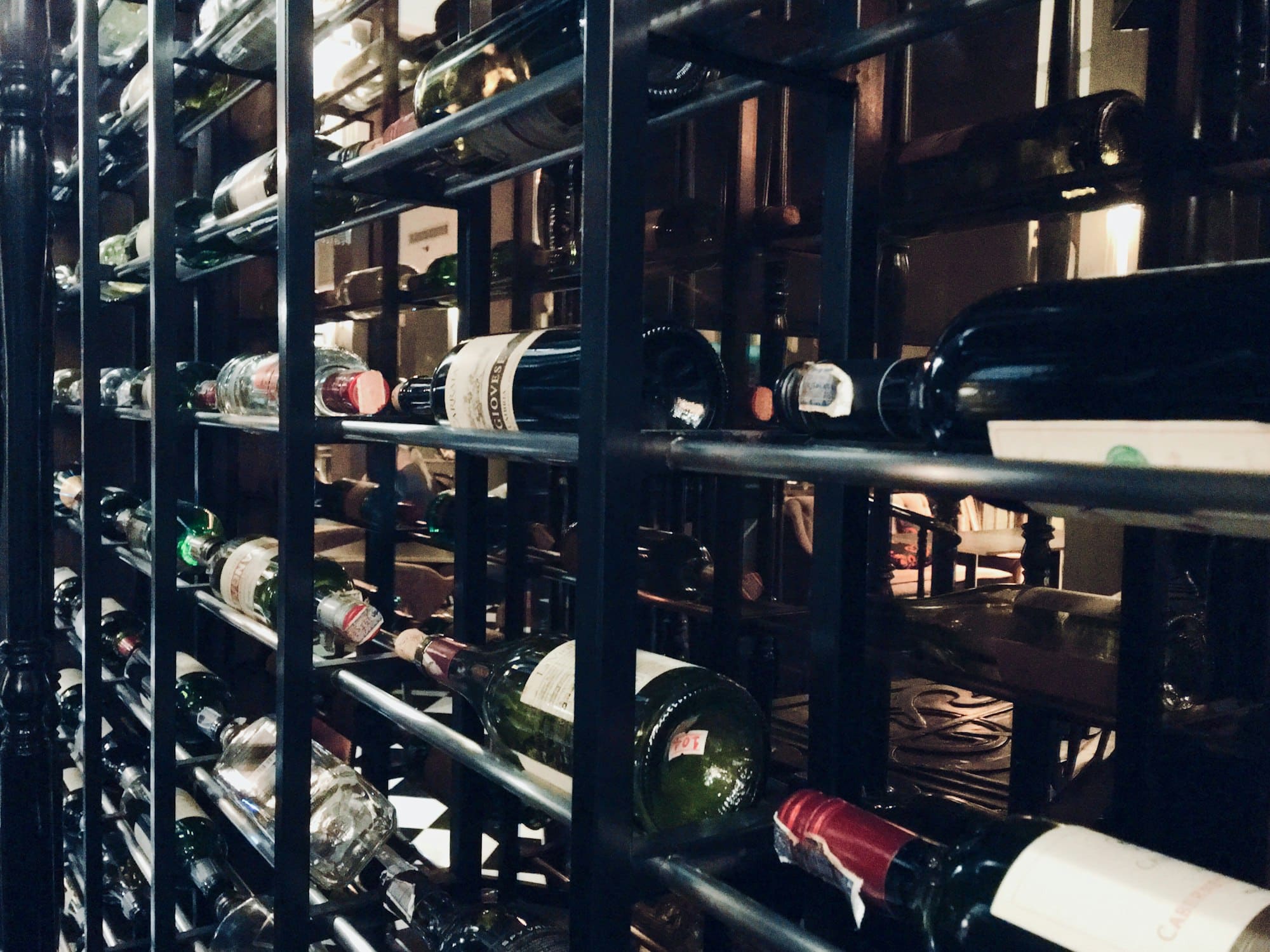How to Design a Home Wine Cellar for Optimal Temperature and Humidity Control?

As you delve deeper into the world of wine, you’ll quickly realize its particularity and the special demands it has. A home wine cellar can help you store your bottles in the best possible conditions, preserving their quality and enhancing their aging process. But to achieve this, you have to take into account two essential factors: temperature and humidity. In this comprehensive guide, we’ll help you develop a solid understanding of the principles behind wine cellar cooling, insulation, and design. We’ll provide you with the essential knowledge to build a wine cellar at home, tailored specifically to these two vital elements.
The Importance of Temperature in Wine Storage
Temperature plays a pivotal role in storing wine bottles. Wines are sensitive to temperature fluctuations, and the right temperature ensures they develop their flavors properly.
In parallel : What’s the Most Efficient Use of Built-In Shelves in a Studio Apartment?
Heat is a silent enemy of wine. A temperature above 70°F will speed up the wine’s aging process, and if it gets too hot, your wine may get "cooked," resulting in flat flavors and aromas. On the contrary, if the temperature in your cellar is too low, it slows down the aging process. The ideal wine cellar temperature is between 45°F and 65°F, with 55°F being perfect.
To maintain this optimal temperature, you will need a cooling system. The type of cooling unit you choose will depend on the size of your wine cellar, the number of wines you aim to store, and the climate of your location. There are self-contained, ducted, and split cooling systems, each with its advantages and drawbacks.
In the same genre : What Are the Best Smart Mirrors for a Futuristic Bathroom Experience?
Self-contained systems are straightforward to install and cost-effective, making them an excellent choice for smaller cellars. Ducted systems, on the other hand, are more expensive but offer better control over the temperature and eliminate any noise or heat from the room. Split systems allow for flexible installation options, with the condenser and evaporator installed separately.
The Role of Humidity in Wine Storage
Humidity is another pivotal factor in wine storage. It’s vital to control humidity to prevent corks from drying out, which can lead to oxidation, and to prevent labels from peeling off.
The ideal humidity level for a wine cellar is between 60% and 70%. Lower humidity levels can cause the cork to dry out, lose its elasticity, and allow air into the bottle. This can spoil the wine or alter its taste. Conversely, overly humid conditions can lead to mold growth and damage wine labels.
To control humidity in your wine cellar, you could consider a humidifier or a wine cellar cooling unit with both cooling and humidifying functions. Dehumidifiers can also be used in areas where the humidity is naturally high.
Space and Design Considerations for Your Wine Cellar
Designing your wine cellar goes beyond aesthetics. The design should be functional, taking into account factors like the size of your collection, the types of wine you will store, and the space available in your home.
If you’re an avid collector, you might need a larger space with a variety of storage options to accommodate different bottle sizes. Shelving should be considered, with both individual and bulk storage options available. Additionally, take into account the ease of access to your bottles, organization, and display. A well-thought-out design will not only look great but also make your wine collection easy to manage.
Do not forget insulation during the design process. Insulation helps maintain a constant temperature and humidity, essential for wine storage. Experts recommend an R-value (a measure of thermal resistance) of 19 or higher for the walls and ceiling.
Glass, an Essential Material in Wine Cellar Construction
The choice of materials used in building your wine cellar plays a significant role in maintaining the ideal temperature and humidity conditions. Glass, in particular, is a popular material due to its aesthetic appeal and functionality.
However, using glass in your wine cellar comes with its challenges. Glass is a poor insulator, so you must ensure that any glass used in your cellar is double-paned or thermal-rated to maintain a consistent temperature.
Glass wine cellar doors and windows provide a beautiful way to showcase your collection, but they need to be correctly installed and insulated. If not, they can quickly become a point of temperature and humidity fluctuation, potentially damaging your wine.
With careful planning and consideration for these factors, you can build a wine cellar that not only adds value to your home but also ensures your wines age at their best. With optimal temperature and humidity control, you can look forward to each bottle reaching its full potential. Remember, good wines deserve proper care, and a well-planned and maintained wine cellar does just that.
Lighting and Ventilation for Your Wine Cellar
When it comes to wine cellar design, proper lighting and ventilation should not be overlooked. These components play a significant role in the overall functionality and preservation of your wine collection.
Lighting within your wine cellar is not only for aesthetics but also for visibility. Low-intensity LED lights are ideal as they do not emit heat or UV rays, which can damage wine. Be wary of using fluorescent or incandescent bulbs as they generate more heat and can affect the cellar’s temperature. Dimmable lights can be a good option, allowing you to adjust the intensity depending on your needs. Remember, wine is photophobic; it prefers the dark.
Ventilation is equally as important in maintaining the ideal conditions for wine storage. It is crucial to remember that your cooling unit will generate heat while it cools. Without proper ventilation, this heat can build up and potentially disrupt the balance of temperature and humidity within your cellar.
Your wine cellar cooling system should be installed in such a way that it can exhaust heat outside of the cellar. If this isn’t possible due to space restrictions, a fan can be used to dissipate the heat. It’s also important to ensure your wine cellar is sealed properly. A vapor barrier can help to prevent moisture and external smells from seeping in and affecting your wine.
Conclusion: Building Your Ideal Home Wine Cellar
Building a home wine cellar is an exciting endeavor and a significant investment, but the rewards are immense. The ability to store your wine in optimal conditions can greatly enhance the taste and quality of each bottle.
Temperature and humidity control are crucial aspects that need careful planning and execution. The right cooling systems, humidifiers, or dehumidifiers need to be chosen based on your cellar’s size, location, and the number of bottles you plan to store.
In addition to these, space and design considerations, choice of materials, and proper lighting and ventilation are also essential components of a functional and efficient wine cellar. Remember, your wine cellar is not just a storage space; it’s a living, breathing entity that ages your wine to perfection.
Don’t overlook the importance of insulation and a vapor barrier in maintaining consistent temperature and humidity levels. Use materials like glass wisely, ensuring they are adequately insulated to prevent fluctuations in the cellar environment.
With careful planning, you can create a wine room that’s not only a stylish addition to your home but also a haven for your wine collection. The journey to building your dream wine cellar can be a rewarding one, with each step bringing you closer to enjoying perfectly aged wines from the comfort of your home. Enjoy the process and, more importantly, savor the results. After all, a well-built and maintained wine cellar is the cornerstone of a great wine collection.
